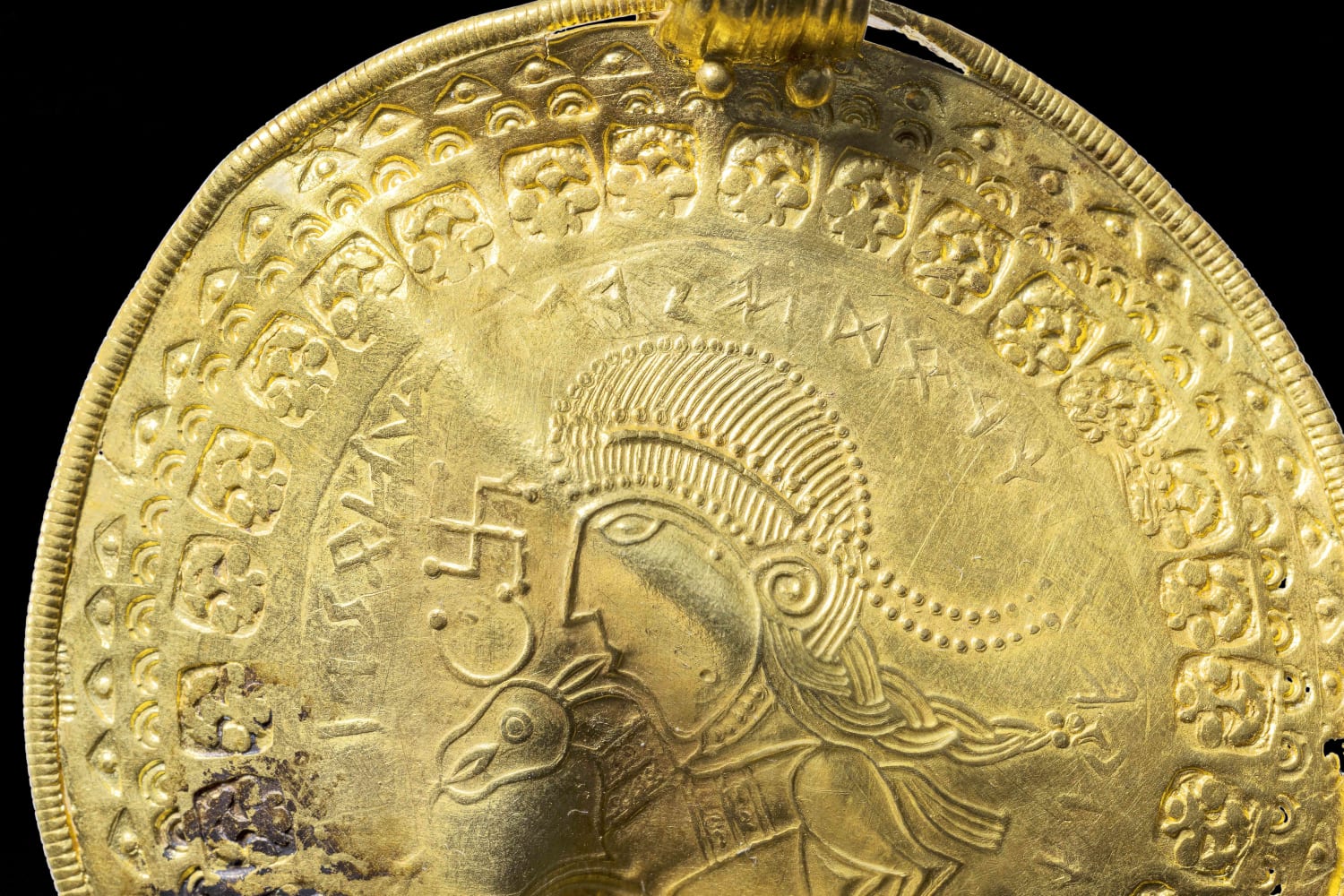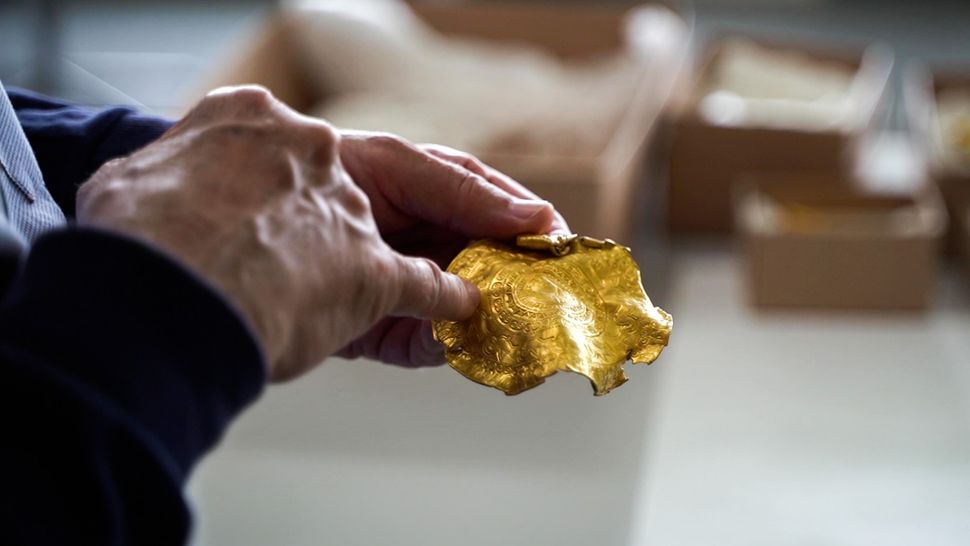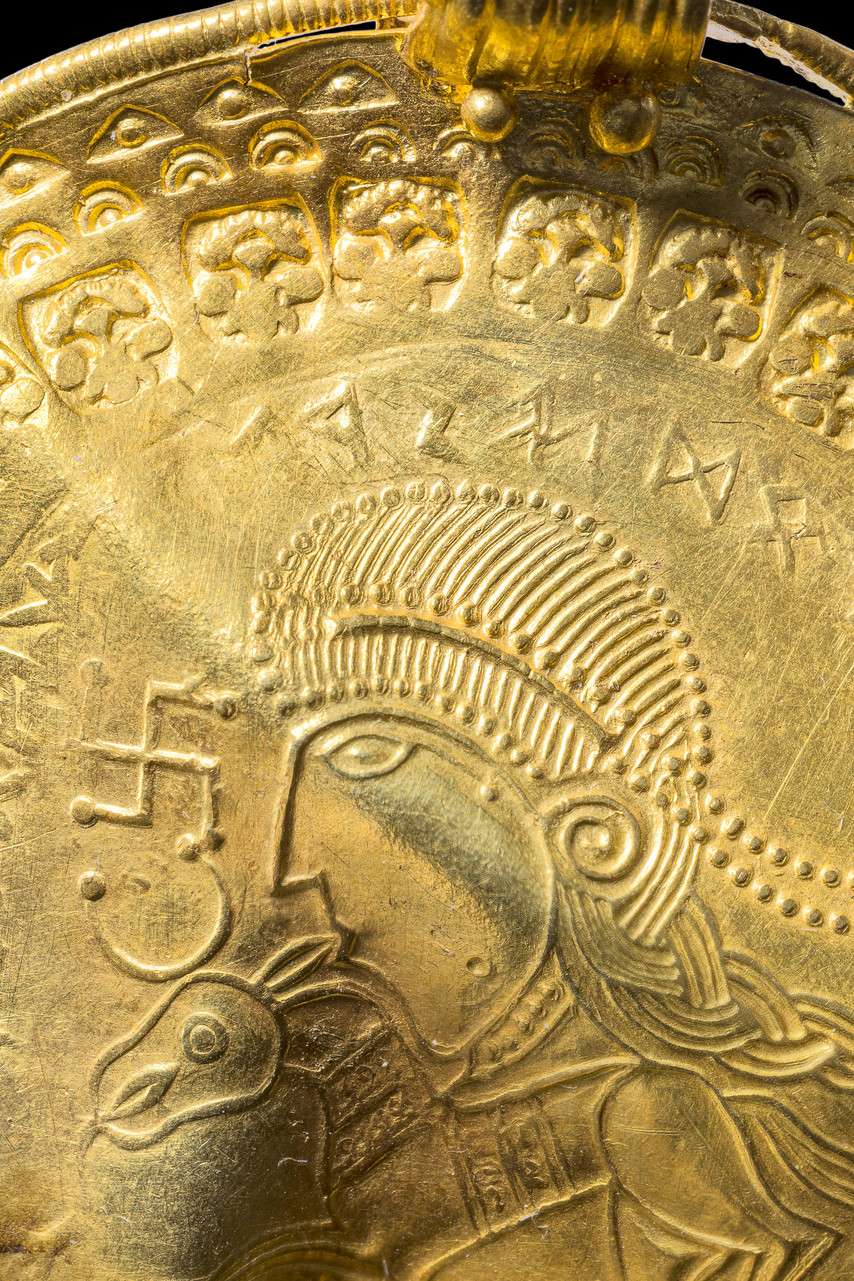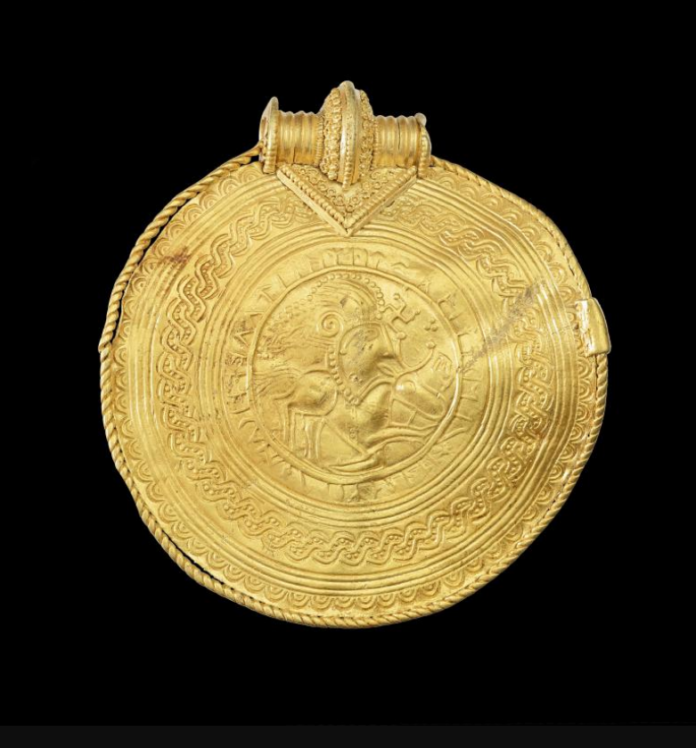Scandinavian scientists have recently made a groundbreaking discovery that sheds new light on the early worship of the Norse god Odin. A gold disc unearthed in western Denmark has been identified as the oldest known inscription referencing Odin. This remarkable find pushes back the timeline of Odin worship by at least 150 years, providing valuable insights into ancient Scandinavian culture and religion.
The Discovery of the Vindelev Hoard

In 2020, a treasure trove weighing approximately 1kg (2.2lb) was discovered in the village of Vindelev, central Jutland, Denmark. The hoard, now known as the Vindelev hoard, contains large medallions the size of saucers, Roman coins repurposed into jewelry, and other gold artifacts. Among these treasures, a golden bracteate – a thin, ornamental pendant – bore an inscription that has captured the attention of historians and runologists.
The Significance of the Inscription
Lisbeth Imer, a runologist with the National Museum in Copenhagen, revealed that the inscription on the bracteate is the earliest solid evidence of Odin worship, dating back to the fifth century. This predates the previous oldest known reference by at least 150 years, which was found on a brooch in southern Germany and dated to the second half of the sixth century.
The Runic Inscription

The inscription on the golden bracteate reads: “He is Odin’s man,” likely referring to an unknown king or overlord. Imer described the inscription as one of the best-executed runic inscriptions she has ever seen. Runes, the symbols used by early tribes in northern Europe to communicate in writing, are rare, and such a well-preserved example provides crucial information about the past.
The Importance of Runic Inscriptions
Krister Vasshus, an ancient language specialist, emphasized the significance of runic inscriptions in understanding historical contexts. “Every runic inscription is vital to how we understand the past,” Vasshus stated. The length and clarity of this particular inscription offer fascinating insights into the religious practices and societal structures of early Scandinavian cultures.
The Context of the Vindelev Hoard

Experts believe the Vindelev hoard was buried around 1,500 years ago, either to protect it from enemies or as a tribute to appease the gods. The discovery of such a significant inscription within this context suggests a deep and early reverence for Odin among the Scandinavian people.
Norse Mythology and Viking Age
During the Viking Age, from 793 to 1066, Norsemen, known as Vikings, engaged in widespread raiding, colonizing, conquering, and trading throughout Europe and even reached North America. The Norsemen worshipped many gods, each with distinct characteristics, weaknesses, and attributes. Sagas and rune stones reveal that the Vikings believed their gods possessed human traits and could behave like humans.
Reinvestigating Bracteate Inscriptions

Imer noted that this discovery encourages a reevaluation of the other 200 bracteate inscriptions known to historians. This new understanding of Odin worship’s timeline could lead to further discoveries and insights into ancient Scandinavian religion and mythology.
Conclusion
The discovery of the oldest known inscription referencing Odin on a gold disc from the Vindelev hoard is a significant milestone in understanding early Norse religion and culture. This find not only pushes back the timeline of Odin worship by 150 years but also provides a deeper insight into the societal and religious structures of early Scandinavians. As more discoveries are made, our comprehension of the ancient world continues to grow, revealing the rich tapestry of human history.
